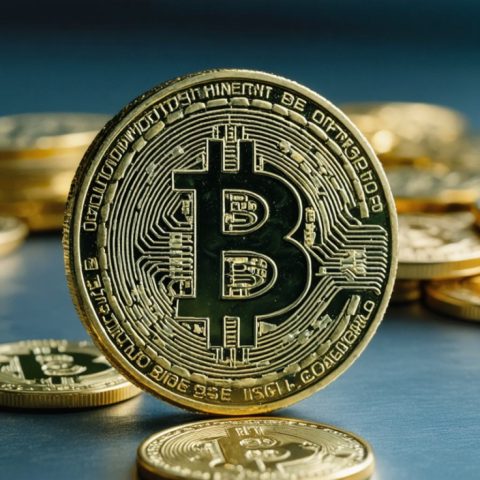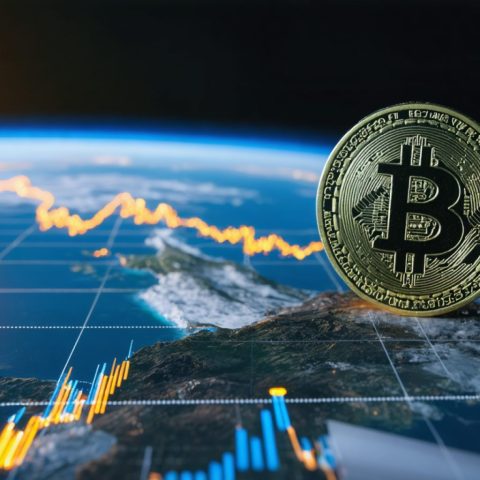In the rapidly changing world of digital currencies, IOTA emerges as a strikingly different player. Unlike traditional cryptocurrencies such as Bitcoin and Ethereum, which rely on blockchain technology, IOTA utilizes a novel architecture known as Tangle. This revolutionary method is built upon a structure called Directed Acyclic Graph (DAG), aiming to seamlessly integrate digital currencies into the burgeoning Internet of Things (IoT).
Despite its groundbreaking potential, IOTA presents a risky but ambitious proposition for financial experts. As debates intensify over its viability, IOTA’s value soared by 13.02% in just 24 hours, reaching $0.261615 at 10:30 AM UTC today. It currently ranks at #106 among global cryptocurrencies.
Developed by a team of innovative German programmers, the Tangle architecture stands out by offering energy-efficient transactions without incurring fees—a significant advantage over blockchain systems. Transactions in the IOTA network are monitored by users themselves, who validate others’ transactions before finalizing their own, creating a decentralized and commission-free ecosystem.
However, the absence of traditional mining and the reliance on “seeds”—81-character randomly generated codes—raises security concerns. Despite its resilience against quantum computing, IOTA faced a security breach in 2017, highlighting vulnerabilities.
With a maximum supply of nearly 2.78 billion tokens, IOTA aspires to enable microtransactions as low as $0.001 without processing fees, potentially transforming how devices interact financially in the IoT. The currency’s journey underscores the complexity and potential pitfalls of the dynamic cryptocurrency landscape.
The Untold Story of IOTA: Challenges and Opportunities in the Digital Currency Landscape
In the increasingly complex world of digital currencies, IOTA emerges not just as another cryptocurrency but as a symbol of innovation and controversy. While many are familiar with its revolutionary Tangle architecture, several underlying factors surrounding IOTA remain uniquely captivating and potentially transformative for societies worldwide.
The Influence of IOTA on Smart Cities and Beyond
IOTA’s potential impact goes beyond its role as a cryptocurrency; it stands at the forefront of the smart city revolution. In an age where urban centers are rapidly adopting IoT technology to improve infrastructure efficiency, IOTA offers a unique transactional framework. The fee-less and energy-efficient nature of IOTA makes it an attractive option for managing city-wide data exchanges and micropayments between devices, potentially saving municipalities significant costs on transaction fees associated with traditional systems.
Potential Pitfalls: Are We Overlooking Future Risks?
However, every innovative stride comes with its share of challenges. One might wonder: is IOTA truly ready to handle the scale of global IoT ecosystems? While its Tangle technology eliminates transaction fees, the lack of blockchain’s proven security mechanisms has sparked debate among financial and technological experts.
Why was IOTA Breached, and What Does It Mean?
IOTA’s security breach in 2017 still looms large in discussions around its safety. This incident serves as a cautionary tale about the vulnerabilities within new technologies. Although IOTA claims resilience against quantum computing threats, security within decentralized networks remains a primary concern. How will IOTA address these vulnerabilities to reassure its users and stakeholders?
Advantages vs. Disadvantages: Where Do We Stand?
Advantages:
– Fee-less Transactions: Unlike many cryptocurrencies reliant on mining fees, IOTA’s model supports free transactions, encouraging more frequent microtransactions.
– Scalability: The Tangle architecture promises infinite scalability, theoretically making it well-suited for the rapidly expanding IoT.
– Energy Efficiency: Its consensus mechanism reduces the energy impact compared to traditional blockchain mining.
Disadvantages:
– Security Concerns: The lack of a robust security framework and previous breaches question its reliability.
– Complexity of Use: The reliance on “seeds” and the intricate transactional process may deter mainstream adoption.
– Market Volatility: Despite its growth potential, IOTA’s value volatility poses risks for investors.
Intriguing Facts and Controversies: What Aren’t We Discussing?
Did you know that IOTA once partnered with luxury automotive brand Jaguar Land Rover to allow drivers to earn cryptocurrency on the go? These types of collaborations highlight IOTA’s versatility but also bring to light its strategic challenges in adding value beyond being a currency.
An ongoing debate revolves around whether IOTA can fulfill its vision without the necessary backing of regulatory bodies. The decentralized and unregulated nature of IOTA poses both an advantage for innovation and a potential hindrance leery governments may consider adopting as IoT standards evolve.
Will IOTA Shape the Future of IoT Transactions?
The future of IOTA hinges on its ability to address these controversial aspects while leveraging its innovative technology. Will it be a game-changer in transforming how devices interact financially, or will it succumb to the pressures of securing a safe and sustainable place in the digital currency market?
For further exploration of cutting-edge cryptocurrency trends and technological advancements, visit Coindesk.








